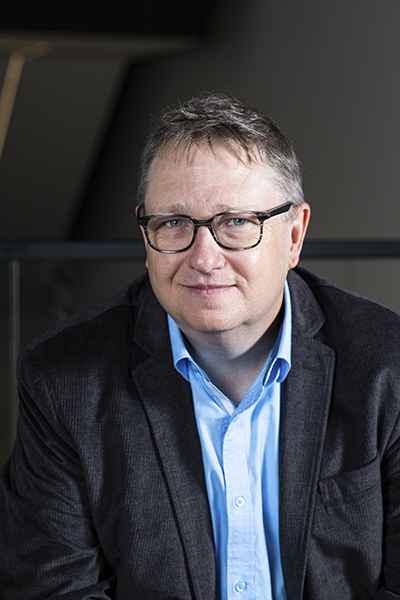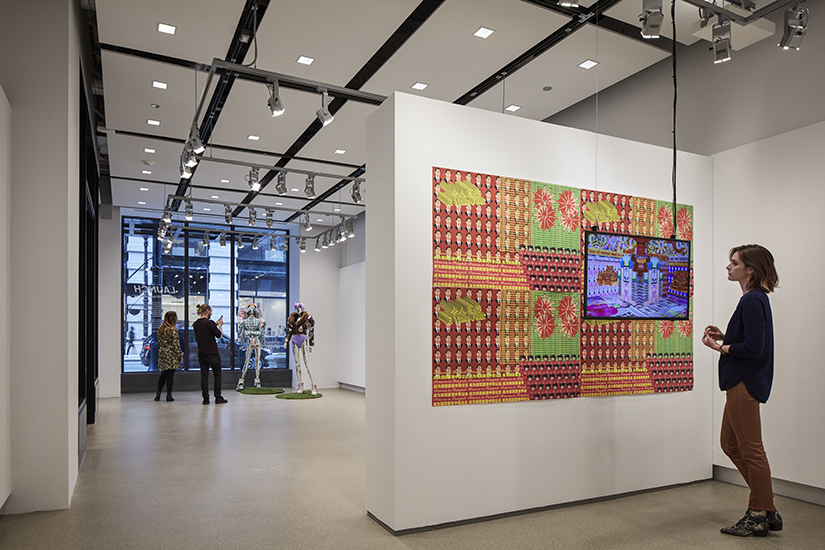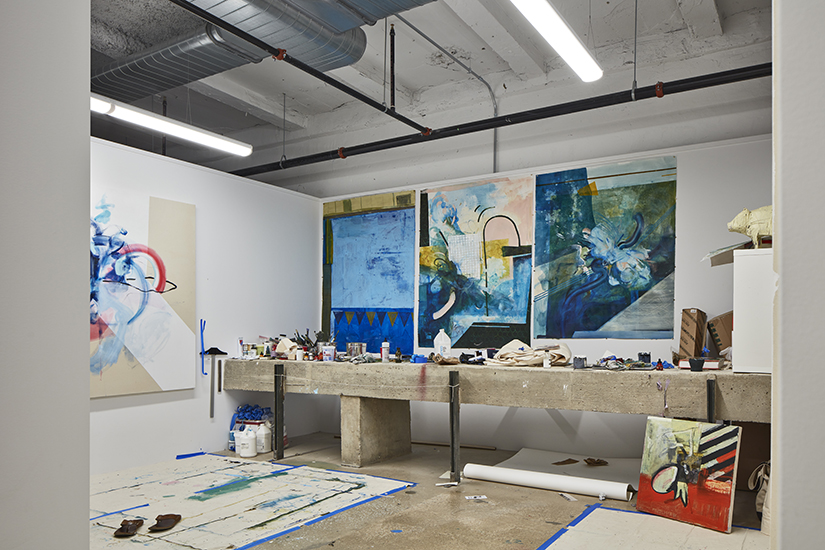|
Getting your Trinity Audio player ready...
|
The origin of Chicago’s art scene can perhaps be traced back to 1866, when 35 of the city’s artists gathered to transform what had been referred to as “a cow town” into a cultural destination. They envisioned a gallery and accompanying school dedicated to visual art—an institution that would also support literary, musical, and theatrical events. The School of the Art Institute of Chicago (SAIC) has since become a staple of the midwestern city it calls home, occupying eight historic buildings downtown and educating notable creators like writer David Sedaris and painters Georgia O’Keefe and Edward Gorey. Upholding the institution from behind the scenes is Tom Buechele, SAIC’s vice president of campus operations and unofficial storyteller.

Buechele’s personal legacy with SAIC dates to 1986, when he enrolled as a student in the BFA program. After graduation, he relocated briefly to LA, working as an art handler and preparator before returning to campus a few years later to direct the school’s media services department. “I didn’t want my artistic practice to be the same as my professional [one],” he says of this decision. “I wasn’t the kind of person who was going to try to make a living as a professional artist. I knew that I make art because I can’t not make it, and because it’s just who I am.”
In the following few decades, Buechele transitioned into academic resources and facilities, campus planning, design, construction, and eventually VP of campus operations. “I think my job is, in retrospect, as creative as it is [for] an artist,” he remarks. “It’s just different.”
Buechele’s artistic practices never ceased as he continued to oversee SAIC’s facilities—in 2017 alone, he earned his MFA in sculpture and, along with colleague Nicholas Lowe, published a book on the school’s history.
“I had been here most of my life, and I felt like nobody had done a good pictorial review of the school,” Buechele says of his book, The Campus History Series: The School of the Art Institute of Chicago. As he explains, this book is a celebration of SAIC’s sesquicentennial, featuring antique photographs, works of art, and signage alongside detailed descriptions and anecdotes.

Now, Buechele has a new story about SAIC to share—the construction and debut of the school’s downtown gallery, which sits prominently at 33 East Washington in the historic Marshall Field & Co. Men’s Store Annex Building.
When SAIC’s former gallery in the nearby Sullivan Center came up for renewal, Buechele opted to explore a variety of potential new locations throughout the downtown area (also known as the Loop). He settled on the Marshall Field Building for two reasons. First, the Field family was an early supporter of SAIC. Second, this space boasts an incredibly unique feature that Buechele recognized as an opportunity—it’s mostly underground.
In the former building, the SAIC’s Sullivan Galleries sat on the seventh floor, which meant that passersby were likely to miss it as they strolled down State Street. The underground gallery in the Marshall Field Building, on the other hand, has a street-level entrance. That entrance also features gigantic glass windows in which SAIC can display head-turning exhibitions.

“We have this giant atrium space in the middle,” Buechele describes, explaining that this is how natural light is filtered into the gallery floors below. “By closing it up a little bit and expanding it on the basement floor, we’re able to get this four-story atrium space with this really beautiful, monumental staircase that doesn’t eat up a lot of square footage.
“Then we made these openings in the different levels so that we could create this Venetian courtyard,” he continues. “It has this courtyard feeling in the middle, where you feel like you’re connected to everything else that’s going on. And then when you look up, the light is coming in off the street from the window.”
The building owners were aligned with Buechele on SAIC’s vision for the space. “They have several buildings, but they believe in investing in the building properly for a long time. Other people, they buy buildings [with] their ideas to flip it and go on to the next project and flip it and go on to the next project, and just take that profit and keep moving it,” the VP says. “These guys are really interested in owning a building, investing in it properly.”
Given their creative reuse of the space, SAIC was something of a “unicorn” and piqued the owners’ interest. Besides, Buechele says jokingly, “Who are they going to find to take 60,000 square feet of basement space in the Loop?”

The lease was officially signed in July 2019, with the rest of the summer devoted to signing documents that factored strict safety standards into the plans. (“The city doesn’t like to see assembly occupancies below grade.”) Following rigorous testing, construction kicked off in October. Naturally, this too was an unconventional process.
“Most people build up, and we were building down,” Buechele explains. The implementation of new steel and a new elevator required mechanical systems to be brought in and lowered four stories. “Everything was built in reverse.”
Construction was still in progress by March 2020, when “the whole world turned upside down,” Buechele recalls. “But we persisted.” As essential workers, the tradespeople SAIC had hired were allowed to keep building throughout the coronavirus pandemic, albeit under new safety regulations. Despite the challenges, Buechele says certain side effects of the lockdown eased the process. “It was easy to unload on the street because there [was] no traffic.”
The gallery was completed that fall, with the lowermost levels used for studios for graduate students and the remaining floors sectioned off for 26,000 square feet of exhibition space. The team incorporated a balance of old and new, preserving original railroad tracks in the basement floor from when the space was used for transporting coal but installing modern features like sophisticated Lutron lighting controls and UV filters to combat both paint fumes and COVID-causing bacteria.

As Chicago’s lockdown was still mostly in effect, the gallery’s opening was inevitably toned down. But SAIC has a history of resilience—in fact, according to Buechele’s book, during the aftermath of the Great Chicago Fire (which destroyed SAIC’s sole building at the time), the institution relocated to a series of rented rooms on Michigan Avenue before finding a new permanent home. The pandemic, too, presented an opportunity to innovate.
SAIC students and faculty collaborated on the debut of the gallery’s first exhibit, Launch, which was introduced to the city in October 2020. This was followed by a live arts performance called New Blood, which took place in the street-level windows of the gallery. Everyone walking in the area became a member of the audience.
Nearly 100 years ago, the Marshall Field Building was famous for ornate window displays that lured in shoppers from around the world, especially during the holiday season. The New Blood performers brought the building’s legacy full circle.
SAIC may not have a basketball or football team. It doesn’t have lazy rivers or a giant stadium. “But we do have a legitimate gallery on the street,” Buechele says proudly. “This is how we share ourselves publicly . . . and this is [how] 30 years of [me] being here, experiencing the school and knowing what we value, comes out in this project.”


